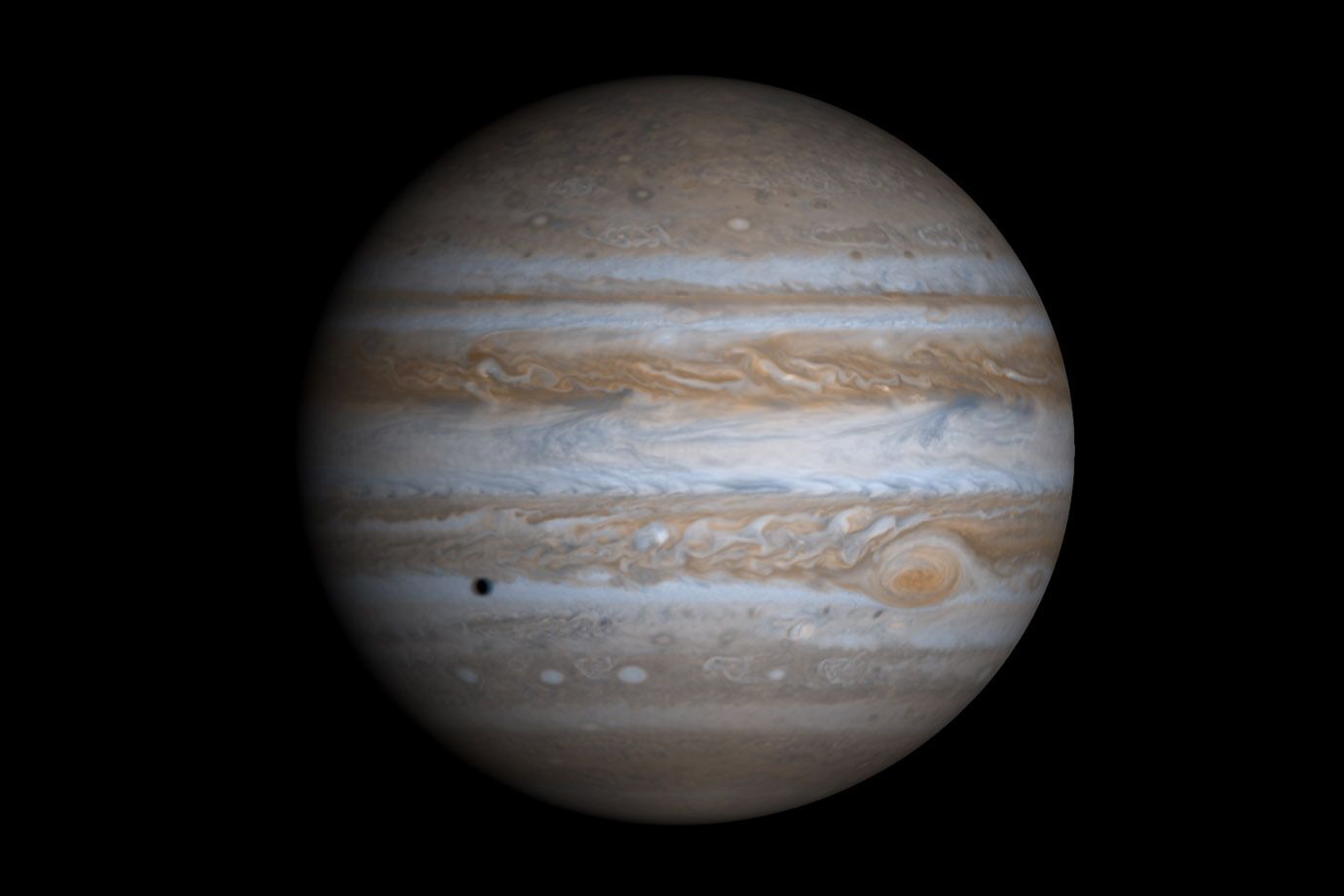
Jupiter
Jupiter is the fifth planet from the Sun and the largest planet within the Solar System. It is a gas giant with a mass slightly less than one-thousandth of the Sun but is two and a half times the mass of all the other planets in our Solar System combined.
Jupiter is primarily composed of hydrogen with a quarter of its mass being helium; it may also have a rocky core of heavier elements. Because of its rapid rotation, Jupiter's shape is that of an oblate spheroid (it possesses a slight but noticeable bulge around the equator). The outer atmosphere is visibly segregated into several bands at different latitudes, resulting in turbulence and storms along their interacting boundaries. A prominent result is the Great Red Spot, a giant storm that is known to have existed since at least the 17th century when it was first seen by telescope. Surrounding the planet is a faint planetary ring system and a powerful magnetosphere. There are also at least 64 moons, including the four large moons called the Galilean moons that were first discovered by Galileo Galilei in 1610.
Jupiter is composed primarily of gaseous and liquid matter. It is the largest of four gas giants as well as the largest planet in the solar system with a diameter of 142,984 km at its equator. The density of Jupiter, 1.326 g/cm3, is the second highest of the gas giant planets. The density is lower than any of the four terrestrial planets.
Source: en.wikipedia.org/wiki/Jupiter - 20.09.2009
Jupiter
The dark spot on the gas giant is the shadow of the Jupiter-Moon Europe.









